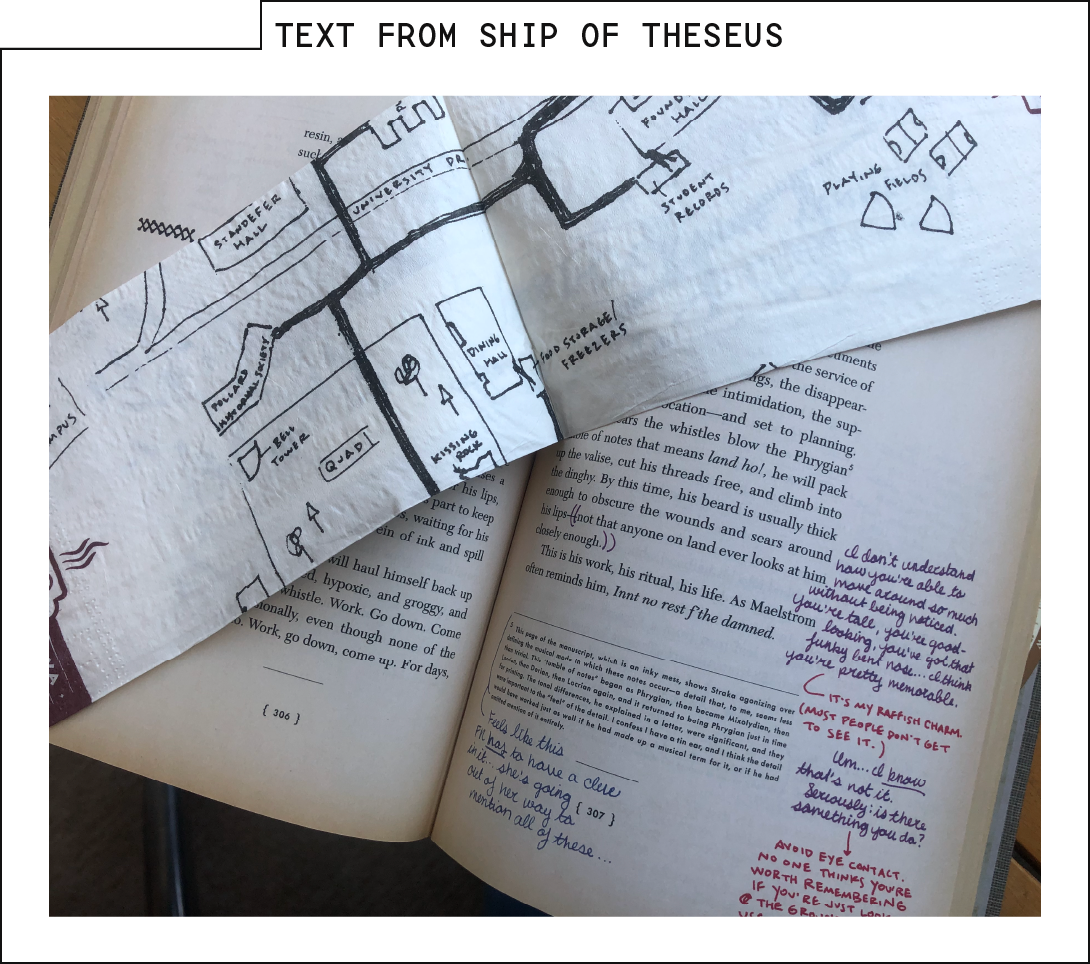Screens, Research and Hypertext
Powered by 🌱Roam GardenThe Ship of Theseus and Experimental Fiction
A story that could only be told in a book.
The Ship of Theseus is not a particularly good book. But it is a worthwhile experience.
At one level, it’s a straightforward work of fiction—a mediocre literary novel, written by the mysterious and reclusive author V.M. Straka, about a the weird journey of a man who is shanghaied onto the titular ship of Theseus.
But Straka doesn’t exist, and the story of the voyage isn’t the main—or even the most interesting—story in the book.
That one is the story about the fictional readers of this fictional book by a fictional author—readers who are trying to uncover the real identity of Straka.
That story is told in the book's marginalia and in various papers and napkins and newspaper clippings left between the pages.

It’s a story that unfolds out of sequence and that both is and is not connected to the plot that’s printed on the pages.
It’s a story of interpretation and a story of the interpreters and an act of interpreting all rolled together.
For more context
The web enables a shift to reader-directed storytelling.
What to read next
The Ship of Theseus deconstructs the very idea of the book.
Other items of interest
Writing in the margins is a conversation across time and space.
The choose your own adventure was a fad in children's fiction. It's still new to nonfiction.
The real story of The Ship of Theseus is the one told in the spaces between the text.
Referenced in
The Bookness of Books
The information in the marginalia was in some ways even more important than the information in the text.
The Forms and Limits of Hypertext
For the past several years, I’ve been pretty obsessed with the idea of the nonlinear text generally and experimental fiction more specifically. The text that doesn’t simply move the reader from A to B to C through a series of logical steps. The text that the reader creates by choosing which steps to follow.